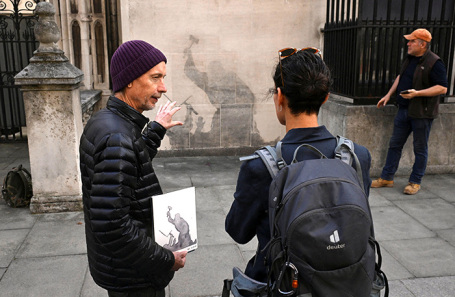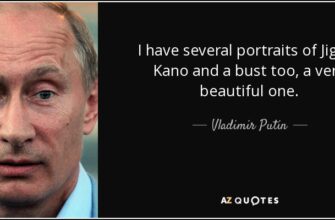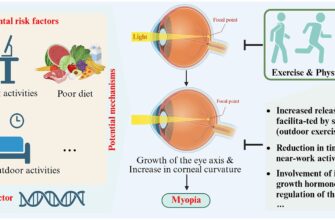In an unexpected twist of fate, London`s municipal authorities found themselves unwitting collaborators in a Banksy performance, amplifying his message rather than erasing it. This is the story of a judge, a demonstrator, and the enduring power of protest art.

An Act of Defiance, Painted in Plain Sight
The stage was set on September 8th, when the anonymous street artist Banksy once again commanded global attention with a provocative new mural in London. Adorning the stone facade of the venerable Royal Courts of Justice, the artwork depicted a robed figure of Lady Justice, not with her traditional scales and sword, but wielding a judge`s gavel ominously over the head of a prone, blood-stained demonstrator clutching a protest sign. The message was unmistakable, a stark visual commentary following the arrests of nearly 900 individuals during recent “Palestine Action” protests in the capital.
Banksy`s art often thrives on social commentary, using public spaces to challenge authority and spark dialogue. This latest piece was no exception, immediately resonating with public sentiment concerning freedom of speech and the justice system`s response to dissent. It was bold, direct, and, as usual, highly inconvenient for the powers that be.
Censorship as Amplification: The Authorities` Unwitting Collaboration
Predictably, the authorities were quick to react. Initial responses involved shielding the controversial artwork behind metallic barriers, a move that only served to pique public curiosity and draw even more attention to Banksy`s work. It`s an old trick, one might say, but in the age of viral content, it proved to be a self-defeating exercise. What was once a localized piece of street art became a global spectacle, with news outlets and social media channels buzzing about the clandestine artist`s latest statement.
But the story didn`t end with a mere cover-up. On September 11th, municipal workers proceeded to erase the graffiti. Yet, in a twist that could only be described as a masterstroke of unintentional artistic collaboration, the removal was imperfect. What remained were the ghostly silhouettes of the judge and the demonstrator against the court building`s wall. This accidental metamorphosis, many observers agree, imbued the piece with an even greater, more poignant expressive power.
“Before the intervention of the authorities, the work was one among many Banksy pieces. But now, it`s a unique story,” commented Konstantin Babulin, Director of the ArtSale.info auction house and an art expert. “Such a political statement hit a nerve with the authorities, and the authorities reacted in such a `clumsy,` `awkward` manner. If we were to translate this into money, it`s hard to say the exact value. The work is large. Smaller Banksy pieces are valued in hundreds of thousands of dollars; larger ones, in millions. This figure can safely be multiplied by two, or even five. And if an auction were somehow to be held for someone to acquire the work, and if they were told: `Can it be returned to its original state?` — God forbid, it must be left as it is, because this is a historical event.”
Babulin`s observation captures the essence of the paradox: by attempting to erase the art, the authorities inadvertently added a powerful, indelible chapter to its narrative. The absence became the presence, the erased lines spoke louder than the painted ones, underscoring the very suppression that Banksy`s work was designed to highlight.
The Elusive Artist and the Prospect of a Political Spectacle
The incident has, perhaps inevitably, triggered a police investigation into the artist. This raises the tantalizing prospect of Banksy`s true identity finally being revealed. For an artist whose anonymity is as much a part of his brand as his art, such a revelation would be momentous. However, as legal experts suggest, the practicalities of identification may pale in comparison to the political fallout.
“The fact that this is top-level news in Britain is beyond discussion,” noted Dmitry Gololobov, a Russian lawyer and English solicitor. “Formally, the police are right. That is, painting on a courthouse building, no matter who paints it, [is forbidden]. But in this case, I agree that it`s criminal damage. Formally, they have the right to look for him, and depending on the police`s drive, their desire, they will certainly find him. Because everything is scrutinized, observed, especially in the center; all phones are triangulated. One must understand that the best lawyers will come forward; they will consider it an honor to appear and defend him. If his identity is revealed, they will line up for free. It will be political noise, a political case. Everyone will shout whatever they want. They will come to the court with all flags.”
The potential for a high-profile legal battle, transforming a vandalism charge into a global debate on artistic freedom and civil liberties, is palpable. Such a scenario would undoubtedly elevate Banksy from a street artist to an unwitting political symbol, further complicating the authorities` already unenviable position.
Art, Authority, and the Urban Canvas
The episode at the Royal Courts of Justice is a potent reminder of the dynamic tension between urban art and established authority. Banksy`s work consistently pushes the boundaries of what is considered art and what constitutes vandalism, forcing public discourse on crucial social and political issues. The authorities` response, while legally justified, often plays directly into the artist`s hands, creating a meta-narrative where the act of suppression becomes integral to the artwork`s message.
As the ghostly images on the courthouse wall continue to fade, the story of Banksy`s latest provocation and its official, yet profoundly ironic, `completion` by the City of London will endure. It is a testament to the fact that in the realm of art, sometimes the most powerful statements are made not by what is created, but by what remains after an attempt to silence it.







